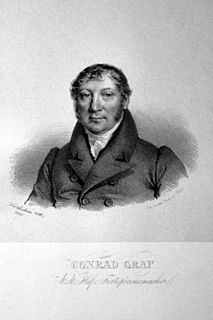
Much has been learned about early music in Norway from physical artifacts found during archaeological digs. These include instruments such as the lur. Viking and medieval sagas also describe musical activity, as do the accounts of priests and pilgrims from all over Europe coming to visit St Olaf's grave in Trondheim.

Johann Nepomuk Hummel was an Austrian composer and virtuoso pianist. His music reflects the transition from the Classical to the Romantic musical era. He was a pupil of Mozart, Salieri and Clementi. He also knew Beethoven and Schubert.

Geirr Tveitt, born Nils Tveit was a Norwegian composer and pianist. Tveitt was a central figure of the national movement in Norwegian cultural life during the 1930s.

Eivind Groven was a Norwegian composer and music-theorist. He was from traditional region of Vest-Telemark and had a background in the folk music of the area.
Håvard Gimse is a Norwegian classical pianist from Kongsvinger, and the brother of the cellist Øyvind Gimse. He has received the Griegprisen (1996) and the Steinway Award (1995). Gimse has done several recordings for Naim Audio, Naxos Records, Sony Classical Records, Chandos Records and Simax.

Ytrebygda is a borough of the city of Bergen in Vestland county, Norway. The borough is the site of Bergen Flesland Airport.

Ladestien is a broad walking track that strolls along the Trondheimsfjord around the entire Lade Peninsula in the municipality of Trondheim in Sør-Trøndelag county, Norway. The track is about 14 kilometres (8.7 mi) long. The western part of the track starts at Korsvika, about 1 kilometre (0.62 mi) east of the center of Trondheim, and follows the fjord east to Charlottenlund. The western part climbs small hilltops, often with a beautiful view of the Trondheimsfjord. The eastern part is almost flat.

Olav Løchen Kielland was a Norwegian composer and conductor.

Lade is a neighborhood in the city of Trondheim in Trøndelag county, Norway. It is in the borough of Østbyen, just northeast of the city centre of Midtbyen and north of the Lademoen neighborhood. Lade is located on a peninsula bordering the Trondheimsfjord, an important waterway dating back to the Viking Age. It is the site of the historic Lade estate and of Lade Church, which dates to around 1190.

The NTNU University Museum in Trondheim is one of seven Norwegian university museums with natural and cultural history collections and exhibits. The museum has research and administrative responsibility over archaeology and biology in Central Norway. Additionally, the museum operates comprehensive community outreach programs and has exhibits in wooden buildings in Kalvskinnet.

Victoria Bachke was a Russian born, Norwegian musician and museum director. She is most widely known as the founder and first director of Ringve Museum, the national museum of music and musical instruments at Lade, Trondheim, Norway.

Conrad Graf was an Austrian-German piano maker. His pianos were used by Beethoven, Chopin, and Robert and Clara Schumann, among others.

Kew Gardens is a botanic garden in southwest London that houses the "largest and most diverse botanical and mycological collections in the world". Founded in 1840, from the exotic garden at Kew Park, its living collections include some of the 27,000 taxa curated by Royal Botanic Gardens, Kew, while the herbarium, one of the largest in the world, has over 8.5 million preserved plant and fungal specimens. The library contains more than 750,000 volumes, and the illustrations collection contains more than 175,000 prints and drawings of plants. It is one of London's top tourist attractions and is a World Heritage Site.

A musical instrument of the chordophone family, the lyre-guitar was a type of guitar shaped to look like a lyre, popular as a fad-instrument in the late 1800s. It had six single courses, with a fretboard located between two curved arms recalling the shape of the ancient Greek kithara. It was tuned and played like the conventional guitar.

Natural History Museum and Botanical Garden, University of Agder is the only natural history museum on the Southern Coast of Norway, located in Kristiansand in Vest-Agder County.



















